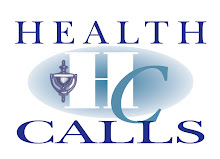MRSA is all over the news right now. Fifteen years ago, MRSA was only found in hospitals. Now, it is a common garden-variety WEED- the kind of wildflower that no one wants and doesn't die with ordinary weed killer. MRSA continues to infect people in the hospital, but is also can cause serious infection in healthy individuals, including healthy athletes.
Why is it in our schools?MRSA is an abbreviation for Methicillin-Resistant Staphylococcus Aureus. MRSA is considered a "super bug", which means that it can be difficult to treat because it is resistant to most antibiotics. The bacteria in MRSA is sometimes referred to simply as "staph," or "staph A". Staph is a common germ found on the skin of healthy people. Because MRSA is found on the skin, infections are occuring from simple cuts and scrapes during football games and wrestling matches.
If staph gets into the body it can cause a minor infection such as boils or pimples or serious infections such as pneumonia or blood infections. One antibiotic commonly used to treat staph infections is methicillin. While methicillin is very effective in treating most staph infections, some staph bacteria have developed a resistance to methicillin and can no longer be killed by this antibiotic.
Traditionally, MRSA only infects hospital patients who are elderly or very ill. Those at more risk are people who have had frequent, long-term, or intensive use of antibiotics. IV drug users and people with chronic illneses or who are immuno-suppressed are also at increased risk.
In the past, MRSA rarely infected healthy people. It isn't unusual now, to find serious skin infections in healthy children, adults, and the elderly living in the community. Skin infected with MRSA will appear red and inflamed around wound sites. An infection will start out looking like a pimple or bug bite. The germs can tunnel deep into the skin and cause infection deep in the tissue below the skin. The infection can get severe enough to cause fever, extreme tiredness, urinary tract infections, pneumonia, toxic shock syndrome, and even death.
While MRSA is resistant to many antibiotics and can be difficult to treat there are a few antibiotics that can cure MRSA infections. Unless the bacteria is completely treated, it can return, especially if the patient doesn't finish the complete course of antibiotic therapy.
The best way to prevent MRSA:
Hand Washing and Normal First Aid
Wash hands immediately after experiencing a cut or brushburn. Clean the skin well, dry it and cover it with a bandaid. Casual contact such as hugging is okay. Persons should use gloves, however, before handling any body fluids of infected persons, and remove the gloves and wash the hands before leaving the infected person's room or home.
Gloving
Those providing first aid to others must wear gloves when touching blood, body fluids and contaminated items. Remove gloves between contact with people and wash hands immediately.
Equipment Care
Appropriate cleaning and disinfecting equipment is important in limiting the spread of the germs.
Handling of Laundry
Clean clothing, towels, and sheets that have blood or body fluids immeditely or as soon as possible to prevent the spread of the bacteria to your own skin and to others. If they need to be moved before laundering, place in a closed plastic bag and wear gloves when handling them.
Here's what you can do to protect yourself, family members or friends from hospital-acquired infections:
Ask all hospital staff to wash their hands before touching you — every time.
Wash your own hands frequently.
Make sure that intravenous tubes and catheters are inserted and removed under sterile conditions; some hospitals have dramatically reduced MRSA blood infections simply by sterilizing patients' skin before using catheters.
Preventing MRSA found in the Community
Keep personal items personal. Avoid sharing personal items such as towels, sheets, razors, clothing and athletic equipment. MRSA spreads on contaminated objects as well as through direct contact.
Keep wounds covered. Keep cuts and abrasions clean and covered with sterile, dry bandages until they heal. The pus from infected sores often contains MRSA, and keeping wounds covered will help keep the bacteria from spreading.
Sanitize linens. If you have a cut or sore, wash towels and bed linens in hot water with added bleach and dry them in a hot dryer. Wash gym and athletic clothes after each wearing.
Wash your hands. In or out of the hospital, careful hand washing remains your best defense against germs. Scrub hands briskly for at least 15 seconds, then dry them with a disposable towel and use another towel to turn off the faucet. Carry a small bottle of hand sanitizer containing at least 62 percent alcohol for times when you don't have access to soap and water.
Get tested. If you have a skin infection that requires treatment, ask your doctor if you should be tested for MRSA. Many doctors prescribe drugs that aren't effective against antibiotic-resistant staph, which delays treatment and creates more resistant germs.


